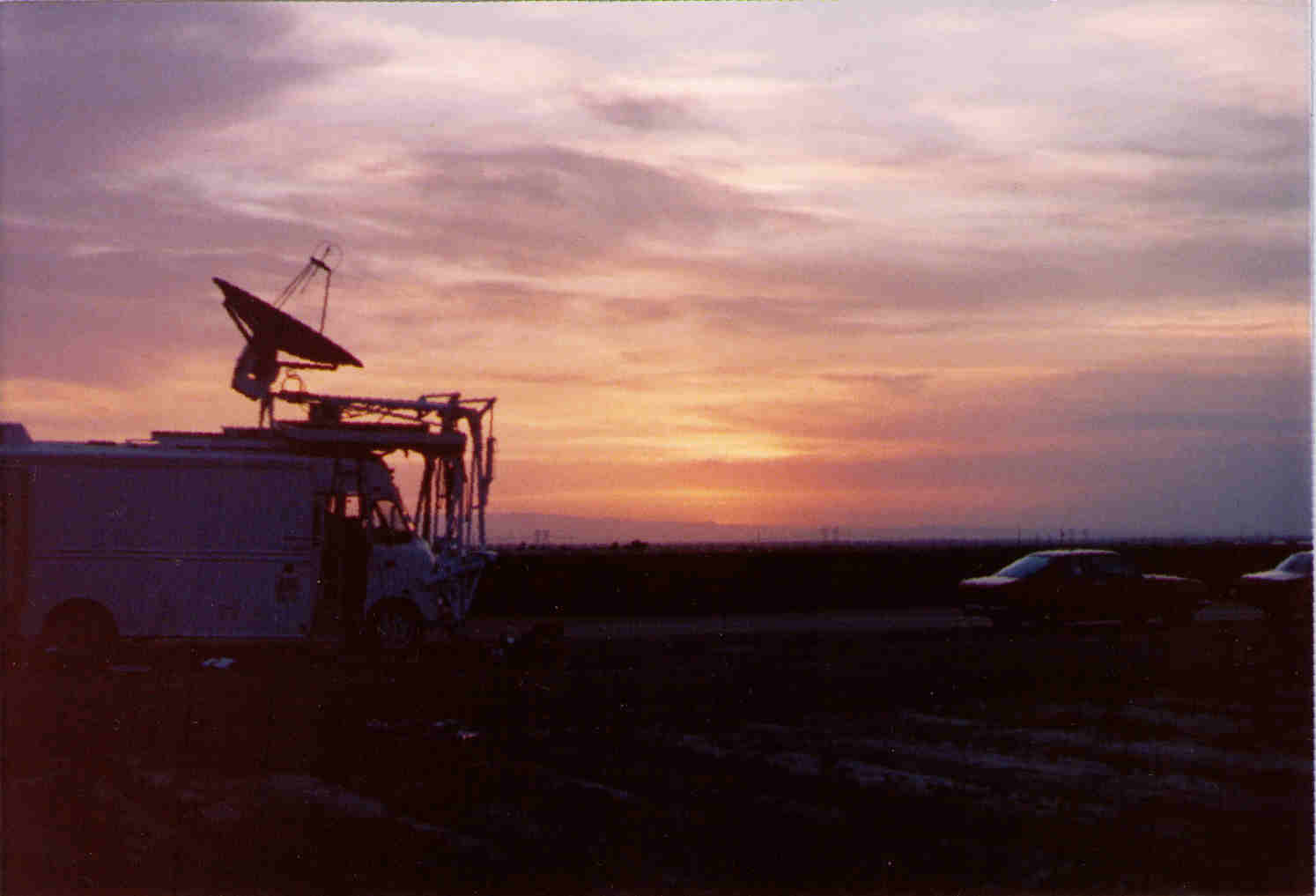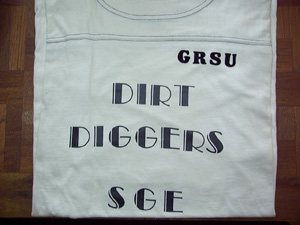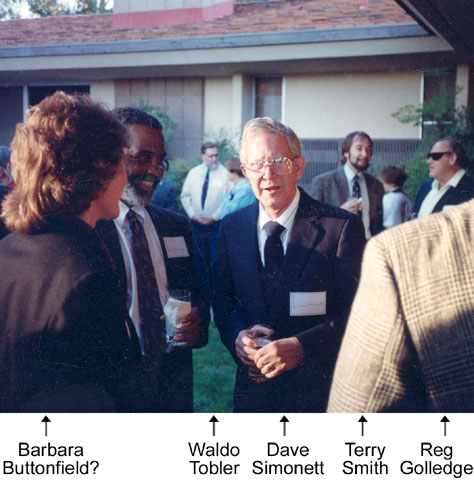Alumnus Greg Mohr (BA 1976) sent the following challenge regarding the deliberately low resolution picture at the right on May 9: “I’ll pledge to donate a four-figure sum to Geography in the name of whoever can guess the date (within one month) and location (within 10 km); which fund shall be specified by the first winner. If no winner, I’ll still give something to the Simonett and Estes funds. Let’s make the deadline for submissions July 1 this year.”
The deadline has come and gone, and here’s Greg’s verdict: “Three guesses early on, none of them correct. The picture is a mobile passive microwave sensor unit from JPL, in a carrot field southwest of Bakersfield CA during a GRSU-JPL field experiment in April 1978. There were four of us on the field crew from UCSB for about a week, though it seemed like a month: Susan Atwater, Tara Hardoin-Twitchell, an undergraduate whose name escapes me (Sandy?), and me. Susie & Tara were on day shift, and the undergrad and I were on night shift. We gathered soil samples and temperatures at various depths once an hour around-the-clock. After the field shift, we took the soil samples back to a motel room in Bakersfield, weighed them wet, dried them in a microwave oven, then weighed them again, then dumped them in a field outside. This meatball lab work took a long time, and we were severely sleep-deprived after a couple of days. I remember one evening, Susie woke me by pressing some per diem cash into my hand and telling me, “Thanks, you were great.” Sexual harassment? Nope, just plain fun.”
Greg goes on to admit that figuring out the photo challenge “probably would’ve required knowledge of the experiment and – or other work involving the JPL truck.” Either way, he plans to make a generous donation to Geography (as usual!): “I’ve donated to the David Simonett Fund in Geography for several years, as a way of giving back to one of the programs that helped make my career possible, in honor and memory of the guy who gave me my first Big Break by recommending me for an NSF Summer Science Internship in 1975. That led in 1976 to my senior thesis in Environmental Studies and a guest lecture in one of the lower-division ES staples taught by Jeff Dozier, and to part-time employment with my internship sponsor, General Electric TEMPO, during my first year in the brand-new Geography graduate program. I’ll split this year’s “challenge” donation between the Simonett and Jack Estes funds, because Jack ran the Geography Remote Sensing Unit in those days. I’m hereby officially forgiving him for deliberately whacking a fly ball way over my outfield head at a Geography softball game on the Faculty Club green, after I’d too-proudly snagged two flies without benefit of a glove. I think the ball made it all the way to the lagoon.”
Greg is officially retired after 28+ years as a planner and environmental specialist with Santa Barbara County but remains active in things to do with environmental studies and science: “I was at the second annual conference of the Association for Environmental Studies and Sciences (AESS) in Portland, June 17-20, mainly because I’m its treasurer and felt it was time to put some faces with the voices from the leaders’ monthly conference call meetings over the past two years. The AESS started soliciting members in April 2008, and grew directly from the Santa Barbara Environmental Studies Summit organized by Bill Freudenberg, Bob Wilkinson, et al. in February 2005. At that time, I was co-president of the Environmental Studies Associates (ESA), the UC-recognized community support group for the ES Program, and we sponsored the Summit’s opening reception at the Maritime Museum. I tended bar, which I guess qualified me to become the founding AESS treasurer. Also, we have family and friends in the Portland-Vancouver area and were able to spend time with them before and after the conference. AESS membership dues will increase soon to support the nascent AESS Journal, set to publish its first issue in early 2011, so everyone reading this should rush to log on to www.aess.info and join right away—still only thirty bucks for pros, fifteen for students, ten for students with AESS-member mentors. Cheap!”
Editor’s note: Thanks for sharing, Greg – in more ways than one! The formal outcome of Greg’s experiments in the late 70s was a NASA Final Report (Blanchard, B. J. 1979. Soil moisture determination study. Report # FR-3829; NASA-CR-160046), but the experiential outcome of that adventure, 29 years ago, goes beyond a Final Report, an old t-shirt, and even personal memories. As Greg puts it, “I hope it might give some students hope that what they’re going through probably will be worth it.” More about Greg can be seen in the June 26, 2007 article.






